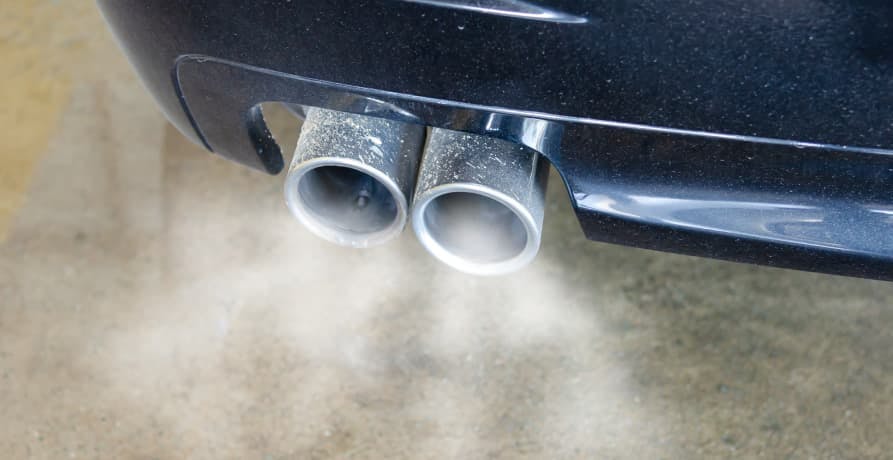Is coffee threatened by climate change?
In this article, we explore how climate change threatens coffee production's future and what this means for the future of your favourite drink.
Your request has been taken into account.
An email has just been sent to you with a link to download the resource :)

As we look to make our cities cleaner and more breathable, strategies like London's Ultra Low Emission Zone (ULEZ) and clean air zones (CAZ) around the UK and beyond are helping to cut down on harmful pollution. These initiatives are not just about cutting back on traffic, they also aim to transform our city centres into healthier, more sustainable places. In this article we’ll explore whether these initiatives have been successful in achieving these goals.
👉 In this article, we’ll explore the effects of ULEZ and other low emission zones on the cities that adopt them, examining their successes and hurdles. How are these zones performing, and what can other cities learn from them?
Low emission zones (LEZs), including London’s Ultra Low Emission Zones (ULEZ), and clean air zones (CAZ), are urban strategies designed to reduce vehicular pollution. These zones restrict or deter the most polluting vehicles from entering designated areas, helping to improve air quality and promoting healthier city environments.
The concept of LEZs first took shape in Sweden, with Stockholm introducing the world’s first zone in 1996. Stockholm's approach focused on banning diesel-fuelled trucks and buses that did not meet the Euro 1 emission standards in the city centre, paving the way for other cities to adopt similar measures.
Nowadays there are over 320 low emission zones in Europe, not to mention the other zones operating around the world.
London's ULEZ is not only the largest clean air zone in the world, it’s also one of the most recognised and strict emission zones. Launched in central London on April 19th, 2019, it has expanded significantly to cover an area of 1,500 square kilometres (580 square miles). Vehicles within this zone must meet strict emission standards: diesel vehicles must comply with Euro 6 standards and petrol vehicles with Euro 4 standards. The ULEZ operates 24/7, charging non-compliant cars, motorcycles, vans and minibuses £12.50.
The ULEZ is not the only low emission zone in operation in the UK, other cities implement Clean Air Zones, which classify vehicles into categories (A, B, C, D) based on their pollution levels, affecting different types of vehicles from private cars to heavy trucks. Cities like Birmingham and Bath have adopted CAZs to control local pollution levels, with varying charges and restrictions based on vehicle type and emission standards.
Beyond the UK, numerous cities have adopted similar initiatives, notable examples include:
As cities try to deal with harmful levels of pollution, the criteria and standards for LEZs and CAZs are evolving. Most are moving towards stricter controls, including banning diesel vehicles altogether and expanding the zones to cover larger areas.
Cities around the world are facing increasing levels of harmful air pollution, a significant portion of which can be traced to vehicle emissions and industrial activities concentrated in urban areas.
Vehicles - particularly older diesel and petrol models - emit significant amounts of nitrogen oxides (NOx), particulate matter (PM), and other pollutants that deteriorate air quality. These pollutants are linked to a range of health problems, including respiratory and cardiovascular diseases, leading to thousands of premature deaths annually.
💡 Numerous studies have shown a strong link between traffic and road air pollution and increased mortality rates. In London, for example, between 3,600 and 4,100 deaths annually are thought to be caused by road traffic pollution.
Many cities struggle to meet air quality standards set by national and international health organisations. Low emission zones like London's ULEZ are designed to enforce stricter controls on the most polluting vehicles to help reduce overall emissions and bring air quality within safer, healthier limits. This is crucial not only for the health of the city's residents but also to avoid potential fines for exceeding pollution thresholds.
💡 The WHO has found that 99% of the world’s population lives in areas with air pollution that is above safe levels.
ULEZ and similar zones incentivise the use of cleaner vehicles and alternative forms of transportation. By imposing fees and restrictions on older, more polluting vehicles, these zones encourage residents and businesses to switch to newer, cleaner models, including electric and hybrid vehicles. They also promote the use of public transport, cycling, and walking, contributing to a reduction in overall traffic volumes.
It’s not just health-harming pollutants that are concerning, greenhouse gas emissions released through the burning of fossil fuels are also a huge issue. The transport sector accounts for around 23% of global emissions, and three-quarters of this is attributed to road travel.
Low emission zones contribute to broader climate change mitigation efforts. By reducing vehicle emissions, these zones help lower greenhouse gas emissions, supporting national and international targets for carbon reduction.
The implementation of low emission zones begins with defining the specific geographic areas where the restrictions will apply. For example, London’s Ultra Low Emission Zone (ULEZ) encompasses all of London’s boroughs and the City of London.
Zones are usually selected by authorities based on traffic data, air pollution levels, and urban layout to maximise the impact on air quality while minimising disruption to the city’s transport network.
LEZs impose emission standards that vehicles must meet to enter the zone without facing penalties. London’s ULEZ for example requires diesel vehicles to meet Euro 6 standards and petrol vehicles to meet Euro 4 standards. These standards are enforced through vehicle checks using licence plate recognition technology, which identifies non-compliant vehicles.
Most low emission zones operate 24 hours a day, seven days a week. Enforcement is usually automated, for example, cameras equipped with automatic number plate recognition (ANPR) technology monitor vehicles entering the zone. Penalties for non-compliance can include fines or daily charges, which help discourage the use of older, more polluting vehicles.
Effective implementation also involves extensive public communication to ensure that residents and visitors are aware of the zone and its requirements. This can include road signs, digital campaigns, and public consultations. Additionally, some cities provide support measures to help residents and businesses transition, such as grants for upgrading vehicles or exemptions for local businesses until they can adjust to the new regulations.
While LEZs, like London’s ULEZ, are usually quite stringent, Clean Air Zones (CAZ) in other UK cities like Birmingham and Manchester vary in terms of the strictness of vehicle restrictions, charges, and types of vehicles affected. For example, some CAZs categorise vehicles differently and apply charges only to specific vehicle types like buses and heavy goods vehicles, not to private cars.
Globally, the implementation of low emission zones can vary significantly. Cities like Berlin have zones that require vehicles to display emission stickers, while others like Paris and Madrid restrict access based on the vehicle's age and fuel type. The specific regulations are tailored to each city’s unique environmental challenges and policy goals.
Low emission zones (LEZs) like London's ULEZ have demonstrated significant success in reducing air pollution within urban areas. For example, since its implementation, London's ULEZ has led to a reduction in traffic-related nitrogen dioxide (NO2) levels in central London by approximately 20%. This air quality improvement also extends to areas outside the immediate city centre.
Studies show that LEZs deliver measurable health benefits. Researchers from Imperial College London reviewed health outcomes in over 320 low emission zones across Europe. Their findings, published in The Lancet, revealed a notable decrease in health conditions associated with air pollution. In particular, the introduction of LEZs has been linked to reduced incidences of heart and circulatory diseases, including fewer heart attacks and strokes, and lower blood pressure issues. The benefits were most notable for older populations.
It can be difficult to accurately compare the impacts of different LEZs due to the wide variety of different rules and methods of implementation. However, in cities that have implemented similar zones, the results echo London's success. For example, zones in Germany and Tokyo have seen significant health improvements, with German zones reporting a 2%-3% reduction in heart problems and a 7%-12% decrease in stroke rates, translating into estimated health cost savings of approximately €4.4 billion.
The longer-term benefits of LEZs, although harder to quantify in short-term studies, are beginning to become clear. A study in Tokyo, for example, showed improvements in lung cancer rates six to nine years after the implementation of its emission zone. This suggests that the health advantages of reduced air pollution accumulate over time, underscoring the importance of sustained pollution control measures in urban planning.
One of the biggest challenges facing the implementation of ULEZ and other LEZs is public opposition. These zones can face criticism from residents and businesses who view the charges as burdensome and unfair. In London, debates around the expansion of ULEZ have sparked considerable controversy, with some arguing that the charges disproportionately affect the less affluent - who are more likely to own older vehicles and may struggle to afford newer, cleaner models.
This tension was evident during the Uxbridge and South Ruislip by-election in July 2023, where the Conservative party targeted London Mayor Sadiq Khan’s ULEZ expansion plans. The Tories criticised the low-emission strategy as alienating car owners and suggested that Labour was pushing towards a carless society. The move seems to have struck a chord with voters, as the Conservative Party candidate was successful. This goes to show how significant an issue LEZs can be to local residents.
Ensuring compliance is another major hurdle. The effectiveness of LEZs heavily depends on robust enforcement mechanisms. In many cities, including London, this is achieved through automatic number plate recognition systems. However, these systems require significant investment in technology and infrastructure. Additionally, the process of identifying and finagling non-compliant vehicles can be administratively challenging and costly.
The economic impact on local businesses - especially small enterprises - can be significant. Businesses that rely on older vehicles for deliveries and services may face increased costs due to fines or the need to upgrade their fleets. This can be particularly challenging for small businesses operating with tight margins, potentially leading to higher operational costs or even business closures.
In response, some local authorities are implementing support measures to help mitigate these impacts. Measures include financial subsidies or grants to help with the cost of upgrading vehicles, as well as transitional periods during which penalties are reduced or waived. By providing this support, authorities can ease the burden on small businesses.
The success of any LEZ also hinges on the availability of alternative transport options. In cities where public transportation systems are not sufficiently developed or accessible, residents and businesses may find it difficult to adapt to the restrictions imposed by LEZs. A lack of adequate infrastructure for non-motorised transport like biking and walking can also limit the effectiveness of these zones.
While designed to reduce pollution, LEZs can sometimes lead to unintended environmental and traffic impacts. For example, drivers might take longer routes to avoid LEZs, potentially increasing overall emissions and traffic congestion in areas surrounding the zones. This displacement effect can undermine the environmental benefits the zones are intended to achieve.
The impact of LEZs can vary significantly between cities due to differences in implementation strategies, geographic and socio-economic contexts, and local political climates. What works in one city might not be effective in another, making it challenging to design universally successful LEZ policies. Moreover, the varying standards across different zones can create confusion for drivers and reduce overall compliance.

As cities worldwide continue to grapple with the challenges of air pollution and climate change, the role of initiatives like ULEZ and other low emission zones becomes increasingly important. The success of these zones will hinge not only on their ability to effectively reduce emissions and improve public health but also on overcoming the socio-economic and political challenges they face.
By refining enforcement mechanisms, enhancing public transportation options, and ensuring that policies are equitable, cities can maximise the benefits of these zones. Furthermore, sharing insights and strategies among global cities will be essential for developing more effective and adaptable low emission frameworks. As we move forward, the continued evolution and expansion of these zones will play an important role in shaping healthier, more sustainable urban environments for future generations.
At Greenly we can help you to assess your company’s carbon footprint, and then give you the tools you need to cut down on emissions. Why not request a free demo with one of our experts - no obligation or commitment required.
If reading this article has inspired you to consider your company’s own carbon footprint, Greenly can help. Learn more about Greenly’s carbon management platform here.


We share green news once a month (or more if we find interesting things to tell you)